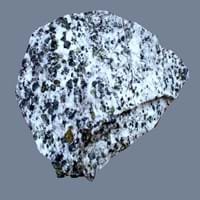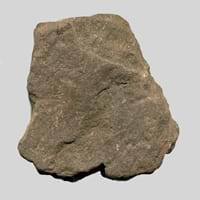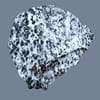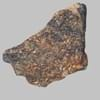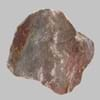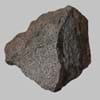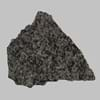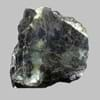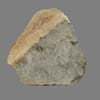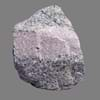Definition
Carbonatite is intrusive or extrusive igneous rock which is defined by mineralogic composition, consisting of greater than 50 percent carbonate minerals
Shale is a fine-grained sedimentary rock which is formed by the compaction of silt and clay-size mineral particles
Discoverer
Unknown
Unknown
Etymology
From any intrusive igneous rock, having a majority of carbonate minerals
From German Schalstein laminated limestone, and Schalgebirge layer of stone in stratified rock. From Old English scealu in its base sense of- thing that divides or separate,
Class
Igneous Rocks
Sedimentary Rocks
Sub-Class
Durable Rock, Soft Rock
Durable Rock, Medium Hardness Rock
Group
Plutonic
Not Applicable
Other Categories
Coarse Grained Rock, Fine Grained Rock, Medium Grained Rock, Opaque Rock
Fine Grained Rock, Opaque Rock
Texture
Granular, Poikiloblastic
Clastic, Splintery
Color
Black, Brown, Colourless, Green, Grey, Pink, White
Black, Brown, Buff, Green, Grey, Red, Yellow
Durability
Durable
Durable
Appearance
Dull, Banded and Foilated
Muddy
Interior Uses
Decorative Aggregates, Interior Decoration
Decorative Aggregates, Homes, Interior Decoration
Exterior Uses
As Facing Stone, Garden Decoration
As Building Stone, As Facing Stone, Office Buildings
Other Architectural Uses
Curbing
Curbing
Construction Industry
As a Flux in the Production of Steel and Pig Iron, As a Sintering Agent in Steel Industry to process Iron Ore, As Dimension Stone, Cement Manufacture, for Road Aggregate, Making natural cement, Manufacture of Magnesium and Dolomite Refractories, Unknown, Unknown
Cement Manufacture, Construction Aggregate, for Road Aggregate, Making natural cement, Raw material for the manufacture of mortar
Medical Industry
Taken as a Supplement for Calcium or Magnesium
Not Yet Used
Antiquity Uses
Artifacts
Artifacts, Sculpture
Commercial Uses
An Oil and Gas Reservoir, As a Feed Additive for Livestock, Gemstone, Metallurgical Flux
Creating Artwork, Pottery
Types
Not Available
Red Shale, Black Shale, Green Shale, Grey Shale and Yellow Shale
Features
Available in lots of colors, Generally rough to touch, Is one of the oldest rock
Easily splits into thin plates, Generally rough to touch, Very fine grained rock
Archaeological Significance
Monuments
Not Yet Used
Used
Famous Monuments
Not Applicable
Jantar Mantar in India
Sculpture
Not Yet Used
Used
Famous Sculptures
Not Applicable
Data Not Available
Figurines
Not Yet Used
Used
Formation
Carbonatites are intrusive or extrusive igneous rocks which are defined by mineralogic composition consisting of greater than 50 percent carbonate minerals and are formed due to low degrees of partial melting of rocks.
Shale forms when very fine-grained clay particles are deposited in water which settle at the bottom of water bodies. They are later compacted hence forming shale.
Mineral Content
Ancylite, Apatite, Barite, Fluorite, Magnetite, Natrolite, Sodalite
Albite, Biotite, Calcite, Chert, Chlorite, Dolomite, Hematite, Micas, Muscovite or Illite, Pyrite, Quartz, Silica, Sulfides
Compound Content
CaO, Carbon Dioxide, Sodium Oxide
Ca, Fe, Mg, Silicon Dioxide, Sodium
Types of Metamorphism
Burial Metamorphism, Contact Metamorphism
Not Applicable
Types of Weathering
Biological Weathering, Chemical Weathering, Mechanical Weathering
Biological Weathering, Chemical Weathering, Mechanical Weathering
Types of Erosion
Chemical Erosion, Wind Erosion
Chemical Erosion, Coastal Erosion, Glacier Erosion
Grain Size
Medium to Fine Coarse Grained
Very fine-grained
Fracture
Conchoidal
Not Available
Porosity
Less Porous
Highly Porous
Luster
Subvitreous to Dull
Dull
Compressive Strength
Not Available
Cleavage
Not Available
Slaty
Specific Gravity
2.86-2.87
2.2-2.8
Transparency
Opaque
Opaque
Density
2.84-2.86 g/cm3
2.4-2.8 g/cm3
Specific Heat Capacity
Not Available
Resistance
Heat Resistant, Pressure Resistant, Water Resistant
Heat Resistant, Impact Resistant
Deposits in Eastern Continents
Asia
China, India, Kazakhstan, Mongolia, Russia, Uzbekistan
Bangladesh, China, India, Russia
Africa
Namibia, Nigeria, South Africa
Ethiopia, Kenya, Morocco, South Africa, Tanzania
Europe
Austria, Denmark, Germany, Great Britain, Netherlands, Norway, Poland, Sweden, Switzerland, United Kingdom
Austria, France, Germany, Greece, Italy, Romania, Scotland, Spain, Switzerland
Others
Greenland
Not Yet Found
Deposits in Western Continents
North America
Canada, USA
USA
South America
Brazil
Bolivia, Chile, Colombia, Ecuador, Peru, Venezuela
Deposits in Oceania Continent
Australia
New South Wales, New Zealand
New South Wales, New Zealand, Queensland, Victoria, Western Australia
All about Carbonatite and Shale Properties
Know all about Carbonatite and Shale properties here. All properties of rocks are important as they define the type of rock and its application. Carbonatite belongs to Igneous Rocks while Shale belongs to Sedimentary Rocks.Texture of Carbonatite is Granular, Poikiloblastic whereas that of Shale is Clastic, Splintery. Carbonatite appears Dull, Banded and Foilated and Shale appears Muddy. The luster of Carbonatite is subvitreous to dull while that of Shale is dull. Carbonatite is available in black, brown, colourless, green, grey, pink, white colors whereas Shale is available in black, brown, buff, green, grey, red, yellow colors. The commercial uses of Carbonatite are an oil and gas reservoir, as a feed additive for livestock, gemstone, metallurgical flux and that of Shale are creating artwork, pottery.
